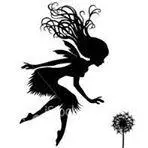Please scroll down for an English review.
הספר "האל האחר: עיונים בכמה מופעים דמוניים של האל בספרות המקראית" מאת חגי דגן מציע קריאה מעמיקה ומאתגרת של דמות האל בסיפור המקראי, תוך שהוא בודק את ההיבטים הפחות מוכרים והאפלים של האל. דגן מתאר את האל כישות קפריזית, לא תמיד צודקת ומלאה בזעם ובסבל ,האל שמבצע פעולות כעונשים קולקטיביים, כמו במגפה שהכה את בני ישראל, או בסיפורים כמו המבול. דגן בוחר להתמקד דווקא בהיבטים האלים והאכזריים של האל, ומצביע על כך שאלו צדדים שכביכול הוסתרו או לא הודגשו מספיק במסורת היהודית ובתפיסות דתיות מסורתיות.
הבעיה המרכזית בספר טמונה דווקא בחזרות על טיעונים דומים שמוצגים שוב ושוב מנקודות מבט שונות. דגן מציג דוגמאות רבות שמבוססות על רעיון אחד עיקרי ,האל במקרא לא תמיד מיטיב, אלא מבצע מעשים שיכולים להיתפס כאלימים או אכזריים. אך לעיתים, תחושת הקורא היא שהוא מסתחרר בתוך אותן דוגמאות בלי להוסיף חידוש או הבהרה משמעותית שמובילה להבנה עמוקה יותר. זה יוצר תחושה שהספר לא תמיד מצליח למקד את הקורא בטיעון המרכזי, אלא מציף אותו במידע נוסף מחזורי, ללא בהירות כיצד הוא מקדם את השיח הרעיוני.
דווקא בפרק המסכם של הספר, דגן מצביע על מסקנה חשובה: הספרות המקראית בעצם חותרת תחת המוטיבציה התיאולוגית להציג אל טוב ומיטיב. דגן מראה כיצד למרות המאמצים להציג את האל כישות מוסרית ומלאת חסד, התנ"ך מציג את האל כישות דמונית ומורכבת, עם תכונות קפריזיות ולעיתים לא צודקות. הבעיה המרכזית היא שהספרות עצמה, שנכתבה על ידי בני אדם, מגלמת את תכונותיהם האנושיות ,והן אלו שמוטמעות בתיאור האל. לאל המקראי, ככל דמות מקראית אחרת, משוייכות מכלול תכונות שמופיעות פעמים רבות בהקשרים של זעם, עונש ופלצות. דגן טוען שהמעבר למודל של אל מוניסטי ,אל אחד טוב שמטיב עם ברואיו ,נפגם מעצם הכתיבה של הטקסטים, שכן הטקסטים עצמם משקפים את המורכבות האנושית בהבנת האל.
לסיכום, "האל האחר" מציע קריאה רעננה ומאתגרת על דמות האל, אך לעיתים קשה להיענות לטיעונים באופן חלק כי יש חזרתיות יתרה שלא תמיד מוסיפה להבנה של הרעיונות העמוקים. דגן מבקש להצביע על מורכבות האל בספרות המקראית ומציע להסתכל על הדימויים השונים שלו ככאלה שמאתגרים את התפיסות המסורתיות, אך בחירתו להציג את אותם רעיונות שוב ושוב פגמה בעיניי בבהירות ובמיקוד של הספר.
האל האחר: עיונים בכמה מופעים דמוניים של האל בספרות המקראית /חגי דגן
הוצאת עם עובד, 2016, 236 עמודים
דירוג SIVI –
איכות אודיו –

The book The Other God: Studies on Some Demonic Manifestations of God in Biblical Literature by Haggai Dagan offers a deep and challenging reading of God's character in the biblical narrative, examining the lesser-known and darker aspects of God. Dagan describes God as a capricious entity, not always just, filled with anger and suffering – a God who performs acts of collective punishment, such as the plague that struck the Israelites, or stories like the Flood. Dagan chooses to focus specifically on these violent and cruel aspects of God, pointing out that these are sides that have allegedly been concealed or not sufficiently emphasized in Jewish tradition and traditional religious perceptions.
The main issue with the book lies in the repeated arguments presented from different perspectives. Dagan provides numerous examples based on a single central idea – that the God of the Bible is not always benevolent but often engages in acts that can be perceived as violent or cruel. However, the reader sometimes feels caught in a loop of similar examples, without significant new insights or clarifications that lead to a deeper understanding. This creates a sense that the book doesn't always succeed in focusing the reader on the central argument, but instead overwhelms them with repetitive information, without a clear indication of how this advances the intellectual discourse.
In the book's concluding chapter, Dagan presents a vital conclusion: biblical literature undermines the theological motivation to present a reasonable and benevolent God. Dagan shows how, despite the efforts to present God as a moral and gracious entity, the Bible portrays God as a demonic and complex figure, with capricious and sometimes unjust traits. The main problem is that the literature itself, written by humans, reflects human characteristics, which are embedded in God's depiction. Like other biblical figures, the biblical God is associated with a range of traits that often appear in contexts of anger, punishment, and horror. Dagan argues that the shift to a monotheistic model, one God who is good and benevolent to His creations, is compromised by the very writing of the texts, since the texts themselves reflect the human complexity in understanding God.
In conclusion, The Other God offers a refreshing and challenging reading of God's character. Still, it is sometimes difficult to fully engage with the arguments due to excessive repetition that does not always contribute to a deeper understanding of the ideas. Dagan seeks to highlight the complexity of God in biblical literature and invites readers to view His various depictions as challenges to traditional perceptions, but his choice to present the same ideas over and over again detracts, in my view, from the clarity and focus of the book.
לגלות עוד מהאתר Sivi's Books
Subscribe to get the latest posts sent to your email.

